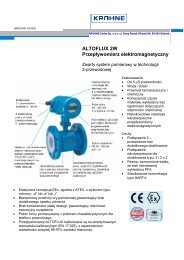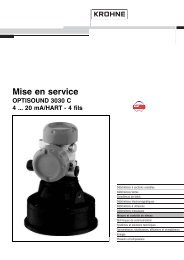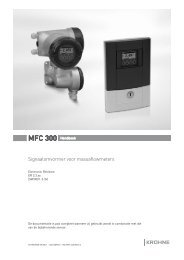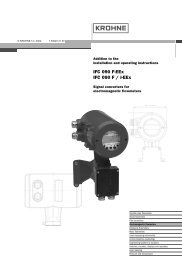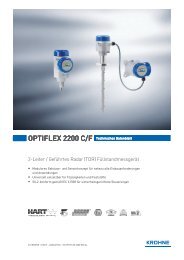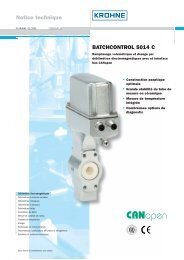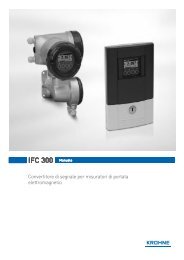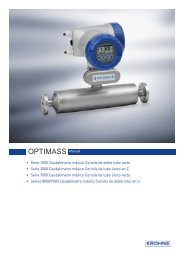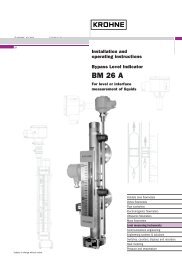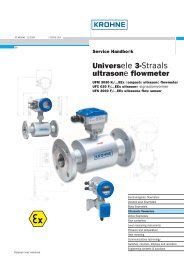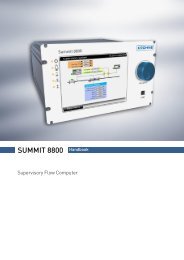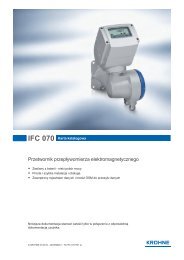You also want an ePaper? Increase the reach of your titles
YUMPU automatically turns print PDFs into web optimized ePapers that Google loves.
<strong>GFC</strong> <strong>300</strong><br />
MODBUS PROTOCOL 6<br />
6.1 General information concerning the protocol<br />
Using RTU (Remote Terminal Unit) format, data is transmitted as 8 bit binary characters. There<br />
are no special characters to determine the start and end of a message frame.<br />
Synchronization is achieved by a minimum silent period of at least 3.5 character times before the<br />
start of each frame transmission and a maximum silent period of 1.5 character times between<br />
characters in the same frame.<br />
6.2 RTU frame format<br />
The format of the query and response frames vary slightly depending upon the command<br />
function. The basic form is outlined below.<br />
Command function Frame format Description<br />
Silent period 3.5 x T All transmissions must be preceded by a minimum silent<br />
period of 3.5 x T, where T is the transmission time of a<br />
single character. This can be calculated from the baud<br />
rate, e.g. at 19.2 kb no parity with 1 stop bit (10 bits),<br />
T=520µs.<br />
Slave address 8bits This is a single byte slave address which is transmitted<br />
first and must be in the range of 1...247. Address 0 is<br />
reserved for a broadcast address which all slaves should<br />
recognize, and therefore requires no response.<br />
Function code 8bits This is an eight bit code in the range of 1...255 although<br />
only 126 functions exist as the codes 129...255 represent<br />
an error condition. An error condition occurs when the<br />
addressed slave does not accept the command, in which<br />
case it responds with the function code + 128, i.e. with its<br />
MSB set to 1.<br />
Register start address or<br />
byte count when required<br />
8 bit byte count<br />
16 bit address<br />
Register start address: for a query command that requires<br />
data to be returned, this field will contain the 16 bit start<br />
address of the register (or data) to be returned.<br />
Note that the converter uses protocol addresses.<br />
Therefore the register address listed is the actual number<br />
required in the Modbus command.<br />
E.g: to access input register <strong>300</strong>06, the register start<br />
address is <strong>300</strong>06dec = 7536hex.<br />
Number of points or data<br />
bytes when required<br />
n×8bits<br />
Byte count: In general this is only present in frames that<br />
are transferring data, and has a value equal to the number<br />
of bytes contained in the data field. The data field is limited<br />
to a maximum of 250 bytes.<br />
Number of points: for a query command that requires data<br />
to be returned, this field will contain the number of<br />
registers to be returned regardless of their bit size.<br />
Data bytes: contains the data requested. The converter can<br />
use big endian format (MSB first) or little endian<br />
format (LSB first).<br />
CRC 16 bits This field contains a 16 bit CRC which is calculated on all<br />
the data bits of the message bytes.<br />
03/2012 - 7312402100 - AD Modbus <strong>GFC</strong> <strong>300</strong> R01 en<br />
www.krohne.com<br />
9



